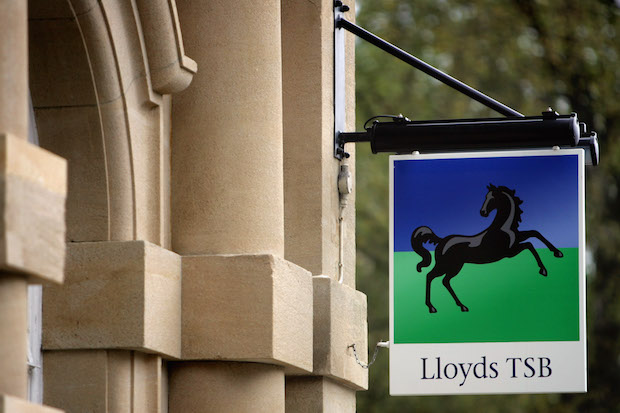I’ve been a customer of Lloyds Bank for over 30 years, and as in any long-term relationship there have been ups and downs. Nevertheless I have always stuck with the black horse; partly because I can’t be bothered to go through the rigmarole of opening another account, but mostly because I’m usually in debt to Lloyds and can’t afford to buy myself out.
However, I’ve now been given a major incentive to finally get a divorce – because since 2 November, my bank charges have shot up by 500 per cent without warning. Up to the end of October, as with most banks, Lloyds charged a monthly fee for being overdrawn – typically a £6 standing fee and around the same in interest. £12 was manageable, and more to the point, I knew exactly how much would be taken in charges and on what date.
However, come the beginning of November, I, like millions of other Lloyds customers, was in for a nasty shock. Checking my account online, I saw a daily fee was now being charged for being overdrawn. When I called Lloyds to ask what this charge was for, I was told by customer services that this was the new system. Rather than get a pesky charge at the end of the month, Lloyds in its wisdom decided it would be far more helpful to take a daily fee from its poorest customers instead.
This charge – 1p for every £7 overdrawn – may not sound like much but if, like me, you regularly push your account to the limit, the charges are far higher than they were before. In my case, with a £1500 overdraft, that equates to something like £2.14 per day or £65 per month – a 500 per cent increase in charges without any warning whatsoever. Worse, because the charge is taken every day, that charge is then incorporated into calculating the charge for the NEXT day – so in my case, despite hardly using the account in recent weeks, my charges are ticking up by a higher amount every single day (57p on 6 November, 59p – mysteriously – also on the 6th, 63p on the 7th). This pushes me further into debt every single day and makes it even harder to keep track of my finances, potentially leading to yet more charges if, for example, a direct debit takes me over the cliff-edge into the Unauthorised Zone.
For a bank that had to be bailed out to the tune of £20.3bn by the taxpayer at the height of the financial crisis in 2007-08, and which has only just gone back into private ownership, it seems bizarre that once again Lloyds is not only encouraging customers to get more heavily into debt (my Lloyds Mastercard limit has been raised without my requesting it several times), but is actually making it that much harder for customers to get in the black at all. Whereas previously it felt like I was treading water, it now feels like I’m trying to swim from a rip tide.
When I mentioned all this to the poor man in customer services, I was told that if I had debt worries, I should contact their specialist team. But I didn’t HAVE debt worries, I retorted, until you totally changed your system and raised my fees 500% overnight. We don’t want any of our customers to be in the red, said customer services. Then why have you just raised my Mastercard limit to £5750 without asking? And why have you just vastly increased your charges? And why didn’t you inform me you were making such a radical change before 2nd November?
‘We sent out a letter.’
‘Well I didn’t get it. Why didn’t you email?’
‘Security reasons. And anyway, it was widely reported in the media,’ said customer services. ‘Which media? I read the broadsheets every day and watch the news obsessively.’
‘Well… it was on Facebook.’
I’m on Facebook. I didn’t see it. But frankly, I’ve had enough of the sodding black horse. I no longer wish to bank with a bank which thinks it can simply raise fees for its poorest customers – those who are usually in the red – by a staggering amount and get away with it. Which is why after 30 years I’ve decided to leave and seek pastures new. Just as soon as I can get my account in the black.






Comments